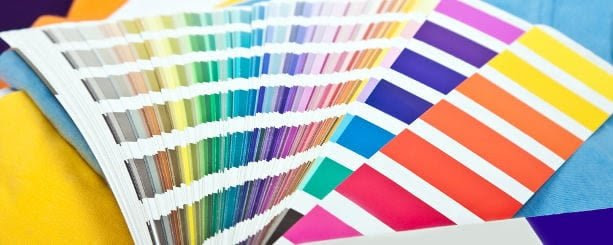You are reading ChinaImportal's Newsletter!

Private label products are becoming increasingly common. Re-inventing the wheel is often unnecessary, especially considering the abundance of factory standard products to choose from in China, and other Asian countries. While a Private label product is, at least according to its original definition, based on a fixed set of specification, combined with the buyers branding, the lines blur in China’s apparel industry.
In order to avoid quality issues and severe misunderstandings when buying Private Label apparel from manufacturers in China, you must follow a strict procedure, involving selection of reference designs and fabrics, size measurements and labelling. In this article, we explain how to manage the ODM apparel product development process in two stages.
Step 1: What You Need From Your Private Label Apparel Manufacturer
a. Reference samples
A private label product is essentially a design template. Hence, the basis for your product is the factory design provided by the manufacturer. Private label samples can be selected directly from the SKU list in the supplier product catalog (i.e., their Alibaba page or print material). As explained in this article, the Reference sample can be customized to a varying degree – in terms of design elements, dimensions, materials and components.As a complement to the reference sample, you shall attempt to obtain the suppliers design drawing. While this is not always offered, it’s an important complement to a sales contract.
b. Fabric Samples
The most important aspect to understand, when buying private label clothing from China, is that apparel manufacturers don’t have ‘fixed specifications’. What this means is that SKU A can be made of various fabrics, for you to choose.Apparel manufacturers procure fabrics from a set of subcontractors, rather than producing fabrics themselves. Hence, the suppliers fabric selection is a reflection of their subcontractor offering. While many suppliers will not ship their fabric catalog overseas, you can request material samples. Before ordering, provide this to your supplier:
- Guideline specifications (i.e., 100% Organic Cotton, 200 – 240 gsm)or submit a reference fabric
- Price per square meter
- Minimum Order Quantity (MOQ)
c. Size Table

The size table shows all measurements, and the manufacturer’s standard dimensions (if any) for each size. Normally, the size table can be modified, which is sometimes required due to size differences in different countries and markets (i.e., American sizes as compared to European and Asian sizes).
d. Order Terms
To avoid unpleasant surprises later on, you should begin negotiating order terms at an early stage. Preferably before you make any further investments by purchasing samples. This is what you need to know:- Minimum Order Quantity: MOQ / SKU, MOQ / Fabric, MOQ / Color, MOQ / Size
- T/T Payment Terms
- L/C Payment Terms and Minimum L/C Order Value
- ODM Sample Cost (Including Tooling Costs, if any)
- ODM Sample Production Time
- Mass Production time
- Accepted Defect Rate
Step 2: What Your Supplier Needs from You to Make ODM Samples
a. Product Specifications
An ODM Apparel specification is generally a mix of various reference samples, standard fabrics, Pantone colors and components, it’s critical that the supplier is provided with an overly clear, and consistent, product specification. This must be included:- Reference Sample SKU (As provided by the supplier)
- Fabric (As provided by the supplier)
- Pantone Colors
- Components (i.e., YKK Zipper)
- Size Table File (Modified or as provided by the supplier)
b. Logo and Embroidery Files
All logo, embroidery and care label files shall be provided directly to the supplier. You may use the standard dimensions and placements as on the ODM Apparel sample, or make changes to the design file (which is hopefully provided by the supplier). Also keep in mind that you must ensure that the care label file may need to include the Country of Origin (i.e., Made in China), the fiber composition (i.e., 98% Cotton 2%, Spandex) and Care Symbols (i.e., ASTM D5489).- Embroidery File (.ai or .eps)
- Logo Print File (.ai or .eps)
- Embroidery / Logo Print Placement (on Apparel Design Drawing File)
- Care Label (.ai or .eps)
- Care Label Placement (on Apparel Design Drawing File)
c. Compliance Requirements
It’s not the manufacturer’s responsibility to keep track of applicable regulations in your market. It’s yours. Before entering development of pre-production samples (preferably even earlier) you must communicate which regulations your product must be compliant with. In the European Union and the United States, there are various substance regulations, restricting the content of chemicals and heavy metals – for example Formaldehyde, AZO Dyes and Lead. Below follows a brief overview:- European Union: REACH
- United States: FHSA (Formaldehyde and AZO Restrictions)
- United States: California Proposition 65
- United States: CPSIA (Children’s Clothing)
Get Accurate Pricing & Product Data
From Verified Manufacturers in Asia
We help Startups & SMEs to get access to accurate information on unit pricing, tooling costs and lead times, for both ODM (Private Label) and OEM (Custom Designed) products. We have solutions tailored for the following industries:
Apparel & Textiles, Watches & Accessories, Electronics,
Home Products, Toys & Children, Materials, Parts & Tools
Home Products, Toys & Children, Materials, Parts & Tools


No comments:
Post a Comment